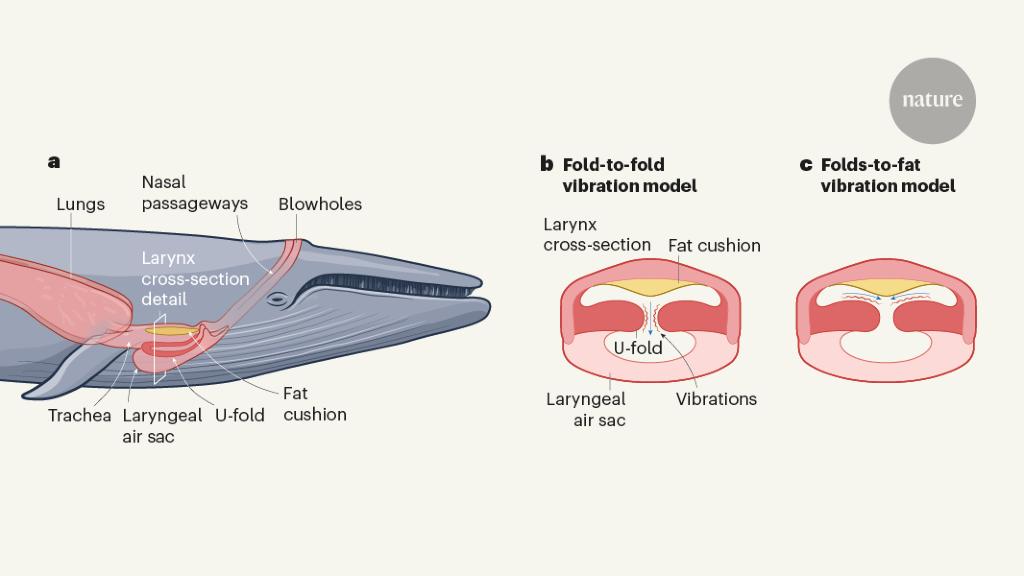Core Concepts
The author introduces a groundbreaking discovery in whale sound production, challenging previous understandings and shedding light on a new method of generating biological sounds.
Abstract
Baleen whales, such as blue whales and humpback whales, are renowned for their underwater singing abilities. The songs are created by an organ in their throat known as the larynx. Despite this knowledge, the exact anatomical process behind sound generation remains unclear. In a recent publication in Nature, Elemans et al. revealed a novel method of producing sound that originates from an unexpected source of vibrations. This research marks a significant advancement in comprehending the mechanisms behind biological sound production.
An innovative way for whales to sing
Stats
Baleen whales like blue whales and humpback whales are known for their singing abilities.
Songs are produced by an organ called the larynx in the whale's throat.
The mechanism for generating these sounds is not fully understood.
Elemans et al. discovered a new method of sound production from an unusual site for vibrations.
Quotes
Key Insights Distilled From
by Joy S. Reide... at www.nature.com 02-21-2024
https://www.nature.com/articles/d41586-024-00307-1
Deeper Inquiries
How does this new understanding of whale sound production impact conservation efforts?
This new understanding of whale sound production can have significant implications for conservation efforts. By gaining insights into how whales produce sounds and communicate underwater, researchers can develop more effective strategies to monitor and protect these marine mammals. Understanding the mechanisms behind whale vocalizations can help in assessing their health, behavior, and population dynamics. Conservationists can use this knowledge to mitigate threats such as ship strikes, noise pollution, and habitat degradation that negatively impact whale populations.
What implications could this discovery have on future marine biology research?
The discovery of a novel method of sound production in whales opens up exciting avenues for future marine biology research. Scientists now have the opportunity to delve deeper into the acoustic communication systems of baleen whales and explore how they adapt their vocalizations for different purposes such as mating calls or navigation. This finding may lead to further discoveries about other species' unique methods of producing sounds underwater. It also underscores the importance of interdisciplinary research collaborations between biologists, acousticians, and engineers in unraveling complex biological processes.
How can studying whale communication enhance our understanding of other marine species?
Studying whale communication not only provides valuable insights into these majestic creatures but also enhances our understanding of other marine species' behaviors and interactions. By examining how whales use vocalizations to convey information over long distances in diverse ocean environments, researchers can apply similar principles to study communication patterns in different aquatic organisms. Understanding the role of sound signals in maintaining social structures, locating prey, or avoiding predators among whales can shed light on similar functions across various marine species like dolphins, seals, or fish. This comparative approach helps scientists draw parallels between different taxa and uncover universal principles governing animal communication systems in the ocean realm.
0
